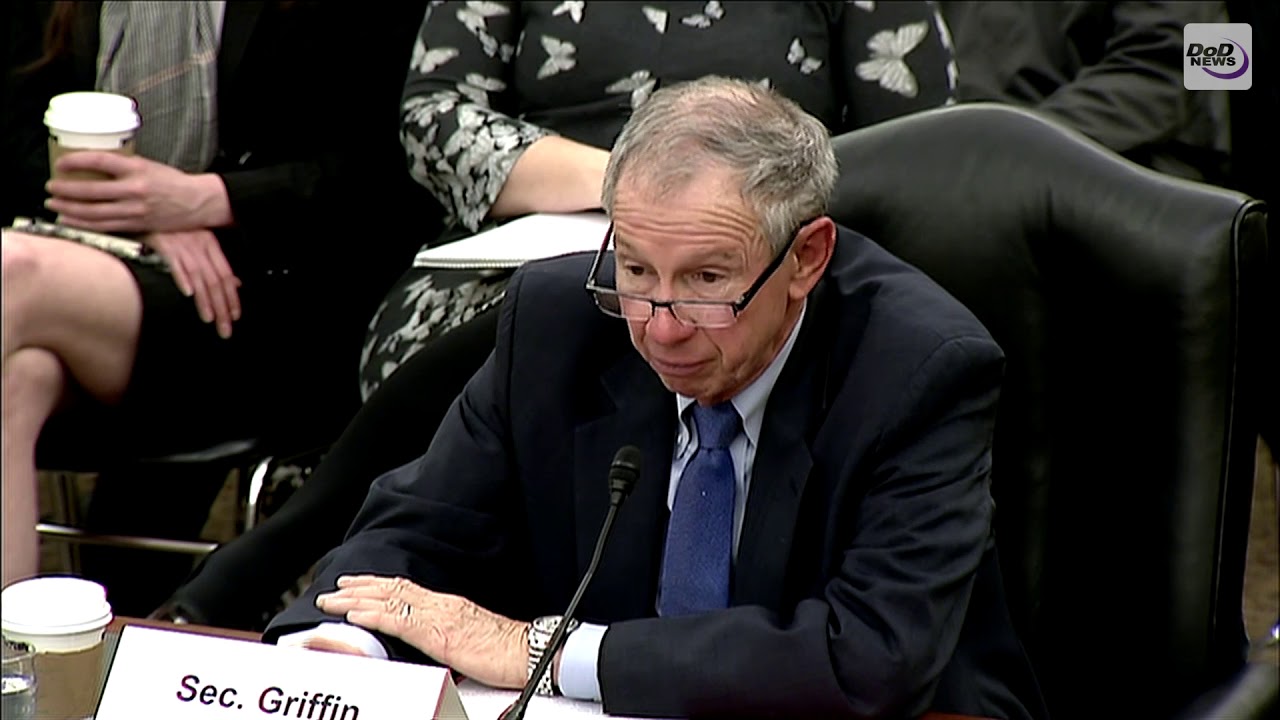
Mike Griffin, Undersecretary of Defense for Research and Engineering
SPACE AND MISSILE DEFENSE SYMPOSIUM: Mike Griffin, the Pentagon’s czar for research and engineering (R&E), has established a new set of priorities for his year-old-plus enterprise that includes development and integration of 5G network technology across DoD programs.
Griffin said he has “moved on” after the R&E office’s official first 13 months from his initial focus on hypersonics, directed energy, and a space sensor layer to deal with Chinese advanced missile threats. Now, Griffin said, 5G is “a Department of Defense initiative that has been given to R&E to supervise.” He explained that Pentagon leadership is “ever more convinced — especially with all the news centering around Huawei and who will and won’t buy their hardware, and whether we will or won’t — that assured microelectronics is a key priority.”
The 5G initiative will be handled by Deputy R&E Undersecretary Lisa Porter, Griffin said, quipping that he just “ride[s] along in the sidecar on that. I’m not the expert.” But he explained that DoD is trying work out how it can use the so-called Internet of Things (IoT) to its advantage, including at facilities such as depots, ports, airfields, and even in autonomous vehicles. “DoD has a huge role to play … because we are going to be a customer.
“We requested significant money — we’re actually requesting extra money for that in [fiscal year 2020] and in the FYDP (Future Year Defense Plan) — so when those budgets [for 2021] are released you’ll see all that,” Griffin told reporters here in Huntsville yesterday. “So this is a major initiative for us.”
Griffin explained that the research work on 5G “ties in hand and glove to the microelectronics initiative” already underway at DoD. The 2020 budget request included $459 million (up from $148 million in 2019) for defense-wide research and development of “Trusted and Assured Microelectronics” under Program Element 0604294D8Z, Project 67 that includes Joint development of assured fifth-generation (5G) and internet of things (IoT) network, 5G modems, and end-user devices using assured design and fabrication processes.”
Noting that “trade wars with China” are “not in my job description,” Griffin noted that DoD takes a slightly different view on the 5G supply chain and network security than perhaps industry does — although certainly others in DoD leadership have been concerned about Chinese infiltration of the microelectronics supply chain.
This is, he said, “Because DoD automatically has to deal with the fact that we get deployed in places where people don’t want us there. And we have to operate in the presence of, or maybe through, networks that are already there and built by people who are adversaries,” he explained. “What are we going to do? Throw up our hands? No.” Rather, Griffin said, US military forces have to “be able to operate through in networks that we not only suspect are hostile or comprised but we know are hostile or compromised. So we have to figure out how to have trusted communications, and trusted behaviors, even on untrusted networks.”
He added wryly that while Huawei may be one of those, “they are not the first and they won’t be the last.”
Lastly, Griffin said it is important to remember that the challenges are not just with hardware. It’s also with software that adversaries are able to inject into US-built hardware, including that built by DoD for its own uses. “We’re under threat even on hardware we build,” he said.
Griffin stressed that the Pentagon has “to take a broader view than targeting any specific company because otherwise we’re going to be missing the threat.” Focusing on blocking out certain technologies and or vendors — what he called the “walled garden approach” — is risky for the US national security community. “You’re just in your own ecosystem, and other people who are outside your walls are competing locally and now you’re not.” This means potential adversaries can gain an edge through competition that the US government and industrial base fails to emulate, putting it behind the innovation curve.
“What I want to bet on is the ability of the United States and our Western allies to out-innovate adversaries,” he said.
Global interest in Iranian drones unlikely to wane despite failed attack on Israel
Though virtually none of the estimated 170 drones Iran launched at Israel got through defenses, analysts told Breaking Defense there’s an eager market globally for Tehran’s relatively cheap, normally effective UAVs.



























